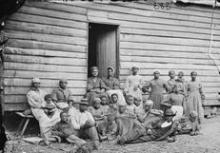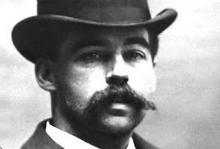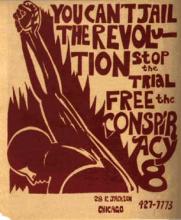May 2011
H.H. Holmes was America's first serial killer
But that same exciting fleetingness was what gave H.H. Holmes, dubbed America’s first serial killer, his opportunity to kill women looking for that same kind of escape. Holmes killed somewhere around 200 women—but only admitted to killing 27—in his “World’s Fair” hotel.
Weathermen illustrated how to really stick it to the man
Today's young people get a lot of flack for not being politically active enough. Our generation uses Facebook instead of marches, Twitter instead of sit-ins. While it would be nice if this generation initiated more physical grassroots movements (i.e. left the house…), I doubt many would be as radical as the Weathermen during the 1960’s and 1970’s. The politically heated atmosphere of the United States at this time converged with Weathermen ideology causing this extreme left group to attempt to overthrow the U.S. government with bombings and riots.
Egyptian King Nasser propagandized for Arab Nationalism in the 1950's & 60's
Sometimes it’s difficult to track all of the changes in the Middle East in recent decades, as well as to chart the United States’ relationship to the Middle Eastern countries. Here’s a brief history of Egypt’s King Nasser who ruled 1956 until his death in 1970. Through manipulation of facts and propaganda, Nasser used the Suez War of 1956, the creation of the United Arab Republic in 1958, and the Israeli re-routing of the Jordanian River in 1963 to advance the cause of Arab nationalism.
People's History of the United States: Part 2
Cairo, Illinois is a city disintegrated by racism

Today, Cairo, Illinois (pronounce CAY-roh) is a virtual ghost town. Predicted to grow bigger than St. Louis when it was first founded, Cairo perpetrated some of the worst racial injustices outside of the south. Due to its alienation from the rest of Illinois geographically and ideologically, Cairo’s downfall seems to be that it was southern town in a northern state.
After the Civil War, three thousand blacks decided to remain in Cairo. In the 1870s and 1880s, black men were excluded from skilled and semi-skilled professions that were available in a time of good economic growth in Cairo. Black women often worked as servants for white homes, but their work didn’t go without complaint.
Intelligence Testing after WWI kept undesirables out of the U.S.

After World War I, the United States only wanted to let the brightest, best (and wealthiest) immigrants into its borders. At Ellis Island, intelligence testing was used to keep undesirables—depressed people, alcoholics, the senile elderly—out, but also were skewed to keep those who weren’t wealthy enough to travel in a cabin out of the country. Rich immigrants were given a pass, but poor immigrants were pressed with rigorous screenings to ensure that they were mentually fit to enter the country. If not, these immigrants were interred in Ellis Island’s mental hospital or deported.
Yiddish theater in America was a halfway point between old country and new

In the late 19th and early 20th centuries, new immigrants often kept to themselves in separate ethnic enclaves. Naturally with this separatism came ethnically-specific culture in different parts of the same cities. From grocery stores and radio stations to places of worship, immigrant groups could find amenities similar to those they would find in their home countries. One such type of ethnic transplantation was the Yiddish theater, which originated in Romania and was transplanted to popularity in American, especially in New York City, from 1888 to the 1920’s.
Ellis Island's Oral History program records immigrant interviews for posterity

I interned at the Ellis Island Immigration Museum as an archival intern last summer. First off, there is no huge book where your ancestors signed their names when they first entered the country. I guess this was in some Will Smith movie that I never saw, so people would always ask where they could find “the book.” It doesn’t exist.
Instead, American immigrants signed a ship manifest in their country of origins before they ever left their port—and Ellis Island doesn’t have a physical record of these. But if Ellis Island visitors really want to hear the immigration stories of tottering Aunt Helen or about the difficult ocean passage of long-dead Uncle Vladimir from Russia, they can listen or read an interview from their relatives as part of Ellis Island’s Oral History program.
The People's History of the United States: Part 1
Many of you are probably familiar with Howard Zinn’s, People’s History of the United States. If you’re not, it is the definitive “other version” of the history of our country from its genesis in the arrival of Christopher Columbus, through colonization, formation of the union, all the way to the 2000 election of George W. Bush to the White House.





